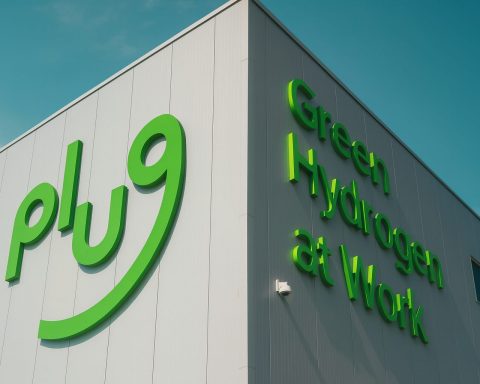Rolls-Royce Holdings has become one of the standout FTSE 100 stories of the last five years, but the narrative is getting more complicated.
In the past two weeks the group has:
- Won a major credit-rating upgrade from Moody’s to Baa1 (with a positive outlook). [1]
- Reaffirmed punchy 2025 profit and cash-flow targets in a trading update. [2]
- Announced new contracts and strategic deals in India, the Middle East and Africa. [3]
- Attracted fresh analyst upgrades – yet also a growing chorus warning that the share price may now be running ahead of earnings. [4]
Here’s how today’s news on 24 November 2025 fits together – and why some commentators think three big threats could still derail the Rolls-Royce share price, even after the Moody’s upgrade.
Where the Rolls-Royce share price stands today
On the US OTC market, Rolls-Royce’s RYCEY ADR closed today around $13.70, within a 52‑week trading range of roughly $6.72–$16.27 and implying a market cap of about $113bn. [5]
Analysts tracked by Investing.com put the average 12‑month price target at about $16.95, suggesting upside of roughly 24% from current levels. [6]
On London’s main market (RR.L), the stock is still not far below its recent peak above 1,190p, despite a pullback that some market writers already describe as a “correction” after extraordinary gains. [7]
According to Yahoo Finance data, the shares have delivered a year‑to‑date return of just over 90%, dramatically ahead of the FTSE 100 index. [8]
In other words: investors are no longer arguing about whether the turnaround worked – they’re arguing about how much of it is already in the price.
Moody’s Baa1 upgrade: why it matters for investors
On 20 November, Moody’s Ratings upgraded Rolls-Royce’s long‑term issuer and senior unsecured ratings from Baa2 to Baa1, keeping the outlook positive. [9]
The agency highlighted several points:
- Transformation delivering – operating profit in the Civil Aerospace division has more than doubled since 2023, and Moody’s expects around £2bn of profit from that division in 2025, roughly two‑thirds of group earnings. [10]
- Balance sheet repaired – the company has been in a net cash position since 2024 and used surplus cash to repay more debt in October 2025, with leverage expected to hover around 1× adjusted gross debt/EBITDA through 2027. [11]
- Robust liquidity – total liquidity at mid‑2025 was about £8.3bn, including £5.8bn of unrestricted cash plus an undrawn £2.5bn revolving credit facility maturing in 2028. [12]
For shareholders, a stronger credit rating is more than a badge of honour:
- It can lower borrowing costs, supporting future investment.
- Some institutional investors can only buy or hold investment‑grade issuers at or above certain thresholds; a move to Baa1 broadens that potential investor base.
- A positive outlook means another upgrade is possible if execution stays on track.
The rating move effectively confirms that the balance‑sheet repair phase of the turnaround is largely complete – but it doesn’t guarantee the share price will keep climbing.
Trading update: guidance still aggressive
Rolls-Royce’s official trading update to 31 October 2025 reiterated full‑year 2025 guidance for:
- Underlying operating profit of £3.1bn–£3.2bn
- Free cash flow of around £3.0bn–£3.1bn [13]
Management pointed to:
- Strong demand in Civil Aerospace, with large-engine flying hours now exceeding 2019 levels on a year‑to‑date basis. [14]
- Robust order books in Defence, including exports of Eurofighter Typhoon engines and progress on US micro‑reactor projects. [15]
- Ongoing growth in Power Systems, where new gas and methanol‑fuelled generators target data centres and other mission‑critical power applications. [16]
So the fundamental story still looks powerful: structurally higher engine flying hours, better pricing, and a more disciplined cost base.
Today’s headlines: India and the Middle East add fresh growth angles
Several 24 November news items show how Rolls-Royce is deepening its footprint in key growth markets.
1. India: private power systems set to overtake government orders
Reports in both The Economic Times and other Indian outlets say Rolls-Royce expects non‑government customers to overtake government demand in its Indian power systems business by 2026–27. [17]
Key points:
- The company has over 2,600 MTU engines and gensets already in service in India across defence, mining and power generation. [18]
- Management sees three main growth pillars on the private side:
- Data centres
- Gas engines
- Uninterrupted power for semiconductor and electronics manufacturing [19]
- Executives expect the business mix to evolve from historically about 70% government / 30% other to roughly 60% private / 40% government once the shift is complete, with the overall pie also growing. [20]
This is exactly the type of long‑duration, high‑margin demand – data centres and chips – that equity investors tend to pay up for.
2. Localising Arjun tank engines in India
A separate article today details how Rolls-Royce is seeking final clearance from India’s Ministry of Defence to manufacture engines for the Arjun main battle tank and future land‑combat platforms locally. [21]
The company:
- Plans to partner with two state‑owned defence firms to localise the MB838 engine for the existing Arjun fleet.
- Is working on its Series 199 engine family for light tanks, future infantry combat vehicles and other platforms, with a view to meaningful technology transfer, including intellectual property rights. [22]
If approvals come through, this would deepen Rolls-Royce’s role in India’s push for defence self‑reliance and potentially lock in decades of aftermarket revenue.
3. Emirates joins Rolls-Royce’s global MRO network
In civil aerospace, Emirates has signed a new memorandum of understanding that will allow it to carry out maintenance, repair and overhaul (MRO) on its own Trent 900 engines – which power the airline’s Airbus A380 fleet – from 2027. [23]
Highlights from today’s AviTrader report:
- Emirates will build a dedicated facility for the work, with the first engine induction scheduled for 2027.
- At the same time, TotalCare coverage for the Trent 900 fleet has been extended well into the 2040s, underscoring a long‑term partnership. [24]
- Rolls-Royce will continue to provide module repairs through its global network, while Emirates handles more of the day‑to‑day overhaul work in Dubai. [25]
Although this gives Emirates more autonomy, it also deepens its reliance on Rolls-Royce’s technology and data‑driven support – reinforcing the company’s influence over a key flagship customer.
4. Major overseas engine contracts
In the UK, regional business coverage today reports that Rolls-Royce has secured a £370m contract to supply and service jet engines for 10 Air Algérie aircraft, with production taking place at its Derby site, which employs around 14,500 people. [26]
For the local economy, it’s a jobs and investment story. For shareholders, it’s another sign that the order pipeline in civil aerospace remains healthy even after a two‑year boom in widebody demand.
Valuation worries: “out of tune” with earnings?
Despite the upbeat news flow, some analysts are turning more cautious on valuation.
An analysis from Simply Wall St published today notes that Rolls-Royce trades on roughly a 15× price‑to‑earnings ratio, only slightly below the UK market median of about 16×. The concern is that consensus forecasts currently imply earnings falling by around 16% per year over the next three years, while the wider market is expected to grow at roughly 17% annually. [27]
In other words:
- The stock is not particularly cheap on a P/E basis.
- Yet the earnings outlook, as modelled by analysts, is weaker than the market average.
Simply Wall St’s conclusion is that investors may be paying too much for a company whose profits are forecast to decline, unless growth proves better than expected. [28]
That tension – between trailing performance and forward forecasts – is at the heart of the current debate.
Analyst sentiment: still heavily skewed to “Buy”
Other analysts remain firmly in the bull camp.
A stock analysis published this morning on DirectorsTalk highlights: [29]
- A current London share price around 1,038p within a 52‑week range of roughly 540p–1,190p.
- An average target price of about 1,198p, implying 15–16% potential upside.
- 13 Buy ratings and 5 Holds, with no Sell recommendations among the analysts the article tracks.
- Solid fundamentals, including estimated revenue growth above 7%, free cash flow of roughly £1.6bn and earnings per share around £0.68.
The piece also notes, however, that short‑term technical indicators such as the MACD have turned negative even while the share price remains above its 200‑day moving average – a pattern that often signals a “strong stock entering a consolidation or correction phase.” [30]
That’s consistent with other commentary today describing the recent pullback as a normal cooling‑off after a blistering run. [31]
“Plenty of stocks are forecast to grow faster”
Another theme emerging in recent coverage is that Rolls-Royce may no longer be the fastest horse in the race.
A Yahoo Finance article summarising analyst forecasts notes that the Rolls-Royce share price is expected to rise by about 16.4% over the next 12 months based on average broker estimates, and argues that a number of other UK stocks are projected to grow faster from here. [32]
On Investing.com’s data for the US‑listed RYCEY shares, the average target implies close to 24% upside, but that still leaves plenty of peers with higher forecast returns, especially among more beaten‑down cyclicals and smaller caps. [33]
The message for investors is clear:
- Rolls-Royce has already re‑rated dramatically as confidence in its turnaround has come back.
- From today’s elevated base, future gains are likely to be driven by execution and earnings beats, not just sentiment repair.
- For pure growth hunters, other shares might offer larger upside potential, albeit often with higher risk.
The 3 big threats commentators are watching
The Motley Fool and other outlets have framed the debate around three potential threats that could knock Rolls-Royce’s share price off course after its phenomenal run. [34]
While the exact wording varies by article, the themes are broadly similar:
1. Demand normalisation in civil and defence
So far, the company has benefited from a powerful combination of:
- Rebounding long‑haul travel, which boosts flying hours and engine‑service revenue.
- Elevated defence budgets, particularly in Europe and the US. [35]
Recent commentary warns that:
- Growth in military aviation and defence orders will eventually slow towards a steadier, more mature pace. [36]
- Any shock to global travel – whether from economics, geopolitics or health – could hit widebody engine flying hours, squeezing high‑margin aftermarket income.
If demand merely flattens instead of falling, that might still be enough to disappoint investors who have extrapolated today’s momentum too far into the future.
2. Execution risk in the transformation plan
Moody’s upgrade rests heavily on the assumption that Rolls-Royce will hit its medium‑term profit targets two years early, by 2026, and keep leverage low while doing it. [37]
That creates several risks:
- Cost inflation or supply‑chain issues could erode margins despite strong revenue.
- Any delays in engine certification, new product launches or capacity expansions (for example in power systems or small modular reactors) could push targets back. [38]
- Large, complex programmes – from A380 engine support to India’s Arjun tank localisation – almost always carry the possibility of budget overruns or schedule slips. [39]
When a share price already reflects early delivery of ambitious goals, even modest execution hiccups can cause sharp volatility.
3. Valuation and expectations risk
After a five‑year gain approaching 1,000% – widely highlighted in recent investing columns – Rolls-Royce is no longer a classic “turnaround bargain”. [40]
The main valuation‑related threats are:
- Multiple compression – if earnings growth slows or the macro environment worsens, the market could decide that a mid‑teens P/E is too rich for a company whose profits might dip in coming years. [41]
- Underwhelming updates – if upcoming trading statements or 2026 guidance fail to show the step‑change investors expect, the share price could reset quickly.
- Rotation into cheaper names – as the Yahoo article notes, investors constantly compare expected returns across stocks; if plenty of peers offer higher forecast upside, fund managers may trim Rolls-Royce holdings to free capital. [42]
Put simply: the higher the share price climbs now, the narrower the margin for error becomes.
So is Rolls-Royce still a buy after all this?
On 24 November 2025, the investment case looks finely balanced:
Positives
- Credit quality has improved to Baa1 with positive outlook; balance sheet risk is much lower than a few years ago. [43]
- Civil aerospace flying hours, defence orders and power‑systems demand are all supportive of earnings, with fresh growth avenues opening up in India and with partners like Emirates and Air Algérie. [44]
- Analyst sentiment is overwhelmingly positive, and most broker targets still sit modestly above today’s price. [45]
Negatives
- The stock has already re‑rated dramatically, leaving it vulnerable to disappointment. [46]
- Some forecasts point to earnings declining in aggregate over the next few years, even as the broader market grows. [47]
- Commentators are increasingly highlighting safer or faster‑growing alternatives for new capital, particularly among under‑loved FTSE names. [48]
For long‑term investors who bought the stock when sentiment was bleak, today’s Moody’s upgrade and stream of contract wins are welcome confirmation that the turnaround is real. For new buyers, however, the share now demands closer scrutiny:
- Are you comfortable paying up for quality knowing that growth may normalise?
- Do you believe management can beat, not just meet, the ambitious targets embedded in today’s price?
- And how does the potential upside here compare to what you could earn from cheaper, less loved stocks?
Those are portfolio‑level questions only each investor can answer, ideally with professional advice tailored to their circumstances.
Disclaimer: This article is for information and news purposes only and does not constitute financial advice or a recommendation to buy or sell any security. Always do your own research or consult a regulated adviser before making investment decisions.
References
1. www.investing.com, 2. www.rolls-royce.com, 3. www.eastmidlandsbusinesslink.co.uk, 4. simplywall.st, 5. www.investing.com, 6. www.investing.com, 7. invezz.com, 8. finance.yahoo.com, 9. www.investing.com, 10. www.investing.com, 11. www.investing.com, 12. www.investing.com, 13. www.rolls-royce.com, 14. www.rolls-royce.com, 15. www.rolls-royce.com, 16. www.rolls-royce.com, 17. manufacturing.economictimes.indiatimes.com, 18. manufacturing.economictimes.indiatimes.com, 19. manufacturing.economictimes.indiatimes.com, 20. manufacturing.economictimes.indiatimes.com, 21. www.electronicsforyou.biz, 22. www.electronicsforyou.biz, 23. avitrader.com, 24. avitrader.com, 25. avitrader.com, 26. www.eastmidlandsbusinesslink.co.uk, 27. simplywall.st, 28. simplywall.st, 29. www.directorstalkinterviews.com, 30. www.directorstalkinterviews.com, 31. invezz.com, 32. uk.finance.yahoo.com, 33. www.investing.com, 34. www.fool.co.uk, 35. www.rolls-royce.com, 36. uk.finance.yahoo.com, 37. www.investing.com, 38. www.rolls-royce.com, 39. avitrader.com, 40. www.fool.co.uk, 41. simplywall.st, 42. uk.finance.yahoo.com, 43. www.investing.com, 44. www.eastmidlandsbusinesslink.co.uk, 45. www.directorstalkinterviews.com, 46. simplywall.st, 47. simplywall.st, 48. uk.finance.yahoo.com








